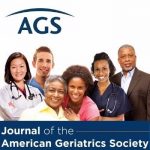 Journal of the American Geriatrics Society Research Summary
Journal of the American Geriatrics Society Research Summary
When older adults become lonely—a condition health professionals call “social isolation”—their health and well-being can suffer. In fact, there may be a link between being socially isolated and osteoarthritis (arthritis) which causes joint pain and can limit your ability to get around.
People who have arthritis often have other health issues which may increase their risk of becoming socially isolated. These include anxiety and depression, being afraid to move around (because arthritis makes moving painful), physical inactivity, and being unable to take care of themselves.
Some 30 percent of adults aged 65 and older have arthritis to some degree, especially in their leg joints. Despite that, until now there has been little research on the relationship between arthritis and social isolation.
In a study published in the Journal of the American Geriatrics Society, researchers examined information from the European Project on OSteoArthritis (EPOSA) study. They wanted to learn whether there is an association between arthritis and social isolation, and to identify the disease’s contribution to social isolation. Continue reading
